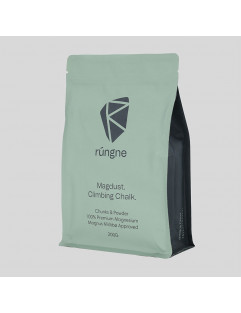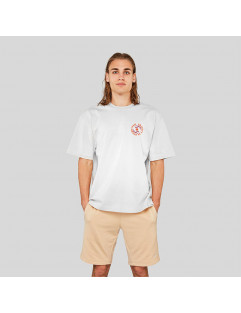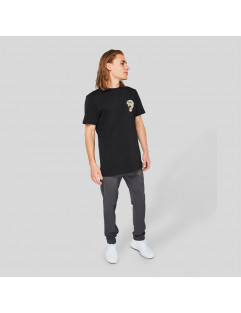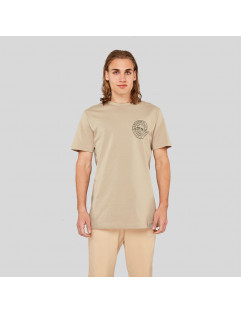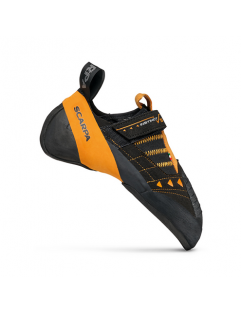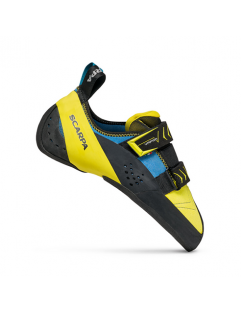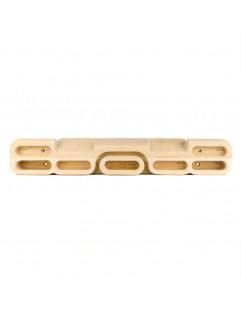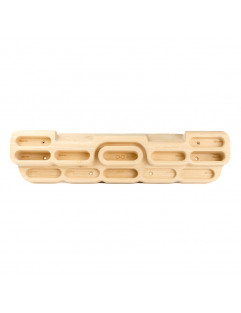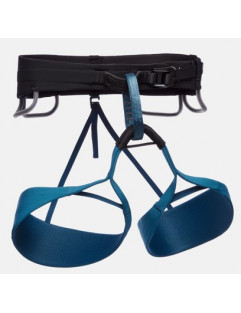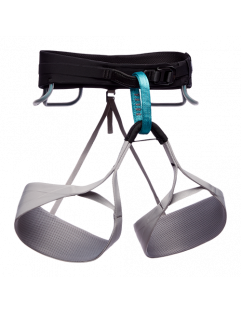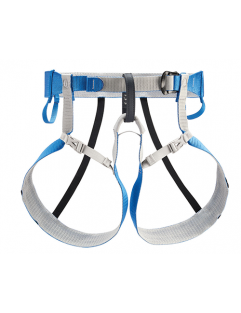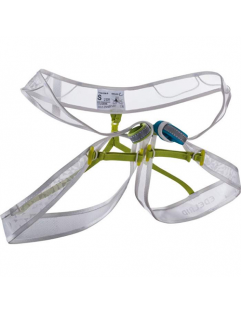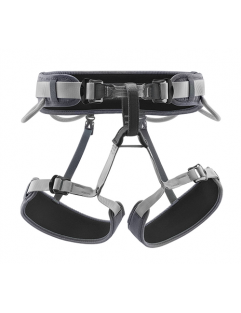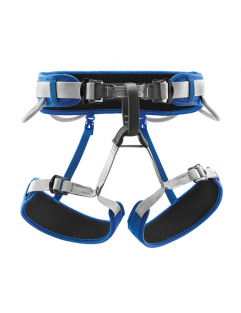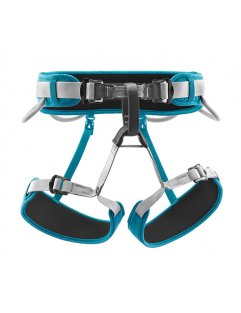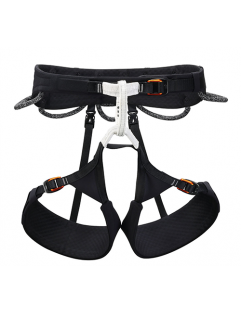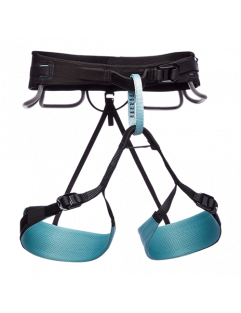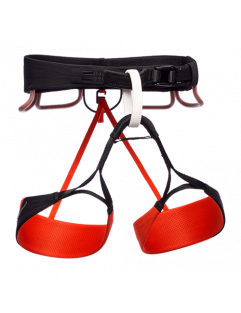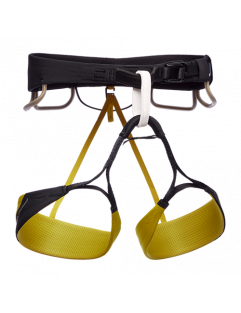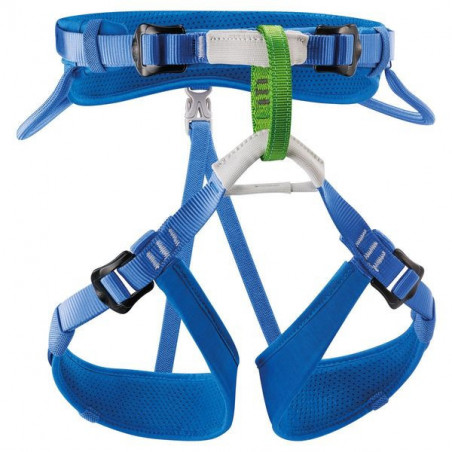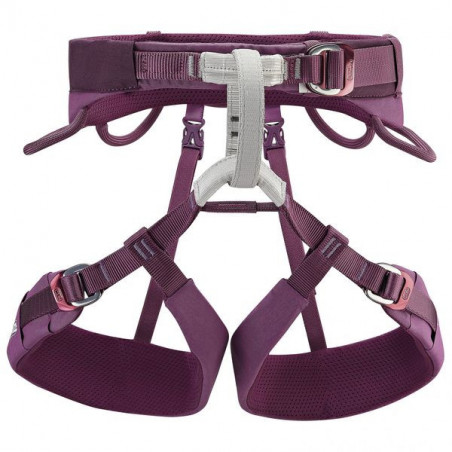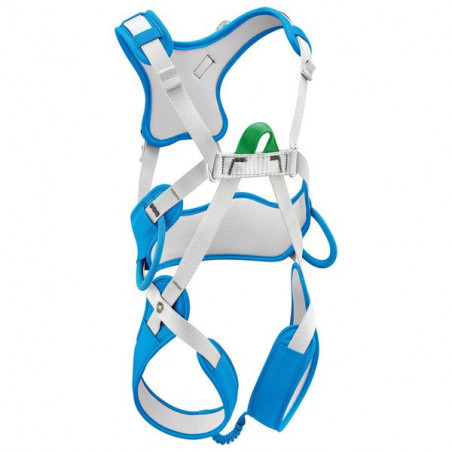New products
velcro-shoes
Scarpa -...The Scarpa Instinct is your friend during sport climbing and bouldering. It is a perfect weapon both indoor and outdoor. This climbing shoe can...
€89.98
Regular price
-50%
€179.95
Price
velcro-shoes
Scarpa - Vapor...A precise, versatile and best-selling shoe that combines a comfortable fit with steep climbing performance, the redesigned Vapor V features fresh...
€84.98
Regular price
-50%
€169.95
Price
fingerboards
YY Vertical -...The Verticalboard Light was designed for climbers looking for an essential and accessible training tool. It offers the climbing training classics:...
€69.95
Price
fingerboards
YY Vertical -...The VerticalBoard First is suitable for adept climbers wanting to become stronger to complete their projects. It offers a variety of different...
€89.95
Price
Active filters
mens-harnesses
Black Diamond - M Solution Harness - Astral Blue - Men's...
Black Diamond - Solution Astral Blue
The Black Diamond Solution Harness provides unequaled...
€79.95
Price
women-s-harnesses
Black Diamond - W Solution Harness - Pewter - Women's...
Black Diamond - Solution WMN Pewter
The sport climber’s harness, the Women’s Solution features...
€79.95
Price
harnesses
Petzl - Tour - Blue/Gray - Ski Touring HarnessPetzl's durable, lightweight harness for glacier travel and ski touring.
For ski touring and/or...
€54.95
Price
harnesses
Edelrid - Loopo Lite - Ski Touring Harness
Ultra-light harness for high alpine use and ski touring that literally fits in your pocket. This...
€59.95
Price
harnesses
Petzl - Corax - Gray - Climbing Harness
The Corax by Petzl is the ideal versatile and adjustable harness. Easy to use and very...
€64.95
Price
harnesses
Petzl - Corax - Blue - Climbing Harness
The Corax by Petzl is the ideal versatile and adjustable harness. Easy to use and very...
€64.95
Price
harnesses
Petzl - Corax - Turquoise - Climbing Harness
The Corax by Petzl is the ideal versatile and adjustable harness. Easy to use and very...
€64.95
Price
harnesses
Petzl - Aquila - Black - Climbing Harness
Petzl's super comfortable climbing and mountaineering harness for performance sport climbing,...
€124.95
Price
women-s-harnesses
Black Diamond - W Technician Harness - Blue Note -...Black Diamond's harness for those who climb it all! The Technician harness is suitable for sport...
€89.95
Price
women-s-harnesses
Black Diamond - W Zone Harness - Octane - Women's...
The Black Diamond Zone harness has been redesigned and offers a few new features. It is still a...
€89.95
Price
mens-harnesses
Black Diamond - M Zone Harness - Sulphur - Men's Climbing...
The Black Diamond Zone harness has been redesigned and offers a few new features. It is still a...
€89.95
Price
Subcategories
-
Mens Harnesses
<h1>Men climbing harness</h1> <p>The climbing harness is one of the essentials when you look at buying gear for climbing. It adds the necessary safety to your climb for any type of climbing..........sports, indoor, alpine or via ferrata. </p> <p>One big difference in harnesses is the weight of the product and also the comfort. Some are more adjustable than others and some can carry more gear than others. So don't just buy a harness because of the price but rather really look in to what your needs are and what you plan to do with it. </p> <p><img src="https://caspersclimbingshop.com/img/cms/C10AO-Sitta_LowRes.jpeg" alt="" width="400" height="429" /></p> <p></p> <h2><span>How to Fit and Test a Climbing Harness</span></h2> <p><span><strong>Fit:</strong></span></p> <ol> <li>Loosen the straps for leg loops and waist loop.</li> <li>Step into the harness. Make sure none of the leg/belay loops are twisted or crossing. The belay loop should face the front of the harness.</li> <li>Pull the waist belt just above your hip (belly button height) to ensure that you will not accidentally slip out of the harness in the event you fall upside down. </li> <li>Adjust the leg loops, if possible. Some harnesses do not have adjustable leg loops and use a piece of elastic to allow the leg loop to stretch.</li> <li>The placement of leg loops is not as important as the placement of the waist belt; it is based more on comfort.</li> <li>Tighter leg loops give the climber more comfortable when hanging freely, although range of movement can be restricted. On the other hand,, loos leg loops provide more mobility but are not as comfortable to dead–hang in. In any case the harness is safe, so everyone must make the personal call on comfort.</li> <li>Finally, make sure the buckles on each loop are doubled back. You are now ready to test your harness.</li> </ol> <p><span><strong>Test:</strong></span></p> <ol> <li>A harness can only be tested when hanging in it. When the harness is weighted, it should feel relatively comfortable and be easy to sit upright (like a chair).</li> <li>There shouldn't be any points of pressure where the there's a feeling of the harness digging in the skin.</li> <li>The waist belt should feel comfortable and not move around too much.You can also test for shifting by trying to pull the waist belt down over the hips. You should not be able to. </li> </ol> <p></p> <p>The choices are endless and difficult today so contact our <a href="/contact-us">Customer Service</a> or <a href="mailto:info@caspersclimbingshop.com">send us a mail</a> to help you choose the right product for your needs. </p> <p></p> <p>Shop online.........more time to climb.</p> <p></p> <p>Casper's Supports Your Summit</p> -
Women's Harnesses
<div class="text parbase section"> <div class="mb10"> <div class="text parbase section"> <div class="mb10"> <div class="text parbase section"> <div class="mb10"> <div class="text parbase section"> <div class="mb10"> <h2><span></span></h2> <div class="text parbase section"> <div class="mb10"> <h1><span><strong>Women's Harnesses</strong></span></h1> <p></p> <p>The climbing harness is one of the essentials when you look at buying gear for climbing. It adds the necessary safety to your climb for any type of climbing..........sports, indoor, alpine or via ferrata. </p> <p></p> <p>One big difference in harnesses is the weight of the product and also the comfort. Some are more adjustable than others and some can carry more gear than others. So don't just buy a harness because of the price but rather really look in to what your needs are and what you plan to do with it. <span><strong></strong></span></p> <p>We have specific harnesses for women which are ergonomically right designed for their needs. </p> </div> </div> <div class="text parbase section"> <div class="mb10"> <p>Women–specific aspects include:</p> </div> </div> <div class="text parbase section"> <div class="mb10"> <ul> <li>Shaped waist belt.</li> <li>Increased rise.</li> <li>Reduction in the leg–to–waist ratio.</li> </ul> <p><img src="https://caspersclimbingshop.com/img/cms/C035BA-LUNA-view-2_LowRes.jpeg" alt="" width="400" height="398" /></p> <p></p> </div> </div> <h2><span></span></h2> <h2><span></span></h2> <h2><span>How to Fit and Test a Climbing Harness</span></h2> <p><span><strong>Fit:</strong></span></p> <ol> <li>Loosen the straps for leg loops and waist loop.</li> <li>Step into the harness. Make sure none of the leg/belay loops are twisted or crossing. The belay loop should face the front of the harness.</li> <li>Pull the waist belt just above your hip (belly button height) to ensure that you will not accidentally slip out of the harness in the event you fall upside down. </li> <li>Adjust the leg loops, if possible. Some harnesses do not have adjustable leg loops and use a piece of elastic to allow the leg loop to stretch.</li> <li>The placement of leg loops is not as important as the placement of the waist belt; it is based more on comfort.</li> <li>Tighter leg loops give the climber more comfortable when hanging freely, although range of movement can be restricted. On the other hand,, loos leg loops provide more mobility but are not as comfortable to dead–hang in. In any case the harness is safe, so everyone must make the personal call on comfort.</li> <li>Finally, make sure the buckles on each loop are doubled back. You are now ready to test your harness.</li> </ol> <p><span><strong>Test:</strong></span></p> <ol> <li>A harness can only be tested when hanging in it. When the harness is weighted, it should feel relatively comfortable and be easy to sit upright (like a chair).</li> <li>There shouldn't be any points of pressure where the there's a feeling of the harness digging in the skin.</li> <li>The waist belt should feel comfortable and not move around too much.You can also test for shifting by trying to pull the waist belt down over the hips. You should not be able to. </li> </ol> <p><span><strong></strong></span></p> <p></p> </div> </div> </div> </div> </div> </div> </div> </div> <p></p> <p>The choices are endless and difficult today so contact our <a href="/contact-us">Customer Service</a> or <a href="mailto:info@caspersclimbingshop.com">send us a mail</a> to help you choose the right product for your needs. </p> <p></p> <p>Shop online.........more time to climb.</p> <p></p> <p>Casper's Supports Your Summit</p> -
Kids Harnesses
<h2 class="page-title"><em><span>Kid's Harnesses</span></em></h2> <p>The climbing harness is one of the essentials when you look at buying gear for climbing. It adds the necessary safety to your climb for any type of climbing..........sports, indoor, alpine or via ferrata. </p> <p>One big difference in harnesses is the weight of the product and also the comfort. Some are more adjustable than others and some can carry more gear than others. So don't just buy a harness because of the price but rather really look in to what your needs are and what you plan to do with it. </p> <div class="text parbase section"> <div class="mb10"> <p>A kids harness generally shares many features with that of an adult, the only difference is that they are build to accommodate a child’s physique.</p> </div> </div> <div class="text parbase section"> <div class="mb10"> <p>Young children, usually 5 years and under, have a relatively high centre of gravity (larger head–to–torso ratio) and should be equipped with a <span class="p2">full–body harness</span>. This type of harness is considered a type B harness and is designed for weights up to 40Kg (88 lbs.). A sit harness is recommended once the kid's centre of gravity lowers.</p> <p><img src="https://caspersclimbingshop.com/img/cms/C068AA-OUISTITI_LowRes.jpeg" alt="" width="330" height="600" /></p> <div class="text parbase section"> <div class="mb10"> <h2><span>How to Fit and Test a Climbing Harness</span></h2> <p><span><strong>Fit:</strong></span></p> <ol> <li>Loosen the straps for leg loops and waist loop.</li> <li>Step into the harness. Make sure none of the leg/belay loops are twisted or crossing. The belay loop should face the front of the harness.</li> <li>Pull the waist belt just above your hip (belly button height) to ensure that you will not accidentally slip out of the harness in the event you fall upside down. </li> <li>Adjust the leg loops, if possible. Some harnesses do not have adjustable leg loops and use a piece of elastic to allow the leg loop to stretch.</li> <li>The placement of leg loops is not as important as the placement of the waist belt; it is based more on comfort.</li> <li>Tighter leg loops give the climber more comfortable when hanging freely, although range of movement can be restricted. On the other hand,, loos leg loops provide more mobility but are not as comfortable to dead–hang in. In any case the harness is safe, so everyone must make the personal call on comfort.</li> <li>Finally, make sure the buckles on each loop are doubled back. You are now ready to test your harness.</li> </ol> <p><span><strong>Test:</strong></span></p> <ol> <li>A harness can only be tested when hanging in it. When the harness is weighted, it should feel relatively comfortable and be easy to sit upright (like a chair).</li> <li>There shouldn't be any points of pressure where the there's a feeling of the harness digging in the skin.</li> <li>The waist belt should feel comfortable and not move around too much.You can also test for shifting by trying to pull the waist belt down over the hips. You should not be able to. </li> </ol> </div> </div> </div> </div> <p></p> <p>The choices are endless and difficult today so contact our <a href="/contact-us">Customer Service</a> or <a href="mailto:info@caspersclimbingshop.com">send us a mail</a> to help you choose the right product for your needs. </p> <p></p> <p>Shop online.........more time to climb.</p> <p></p> <p>Casper's Supports Your Summit</p>

